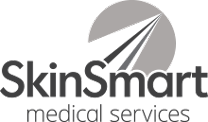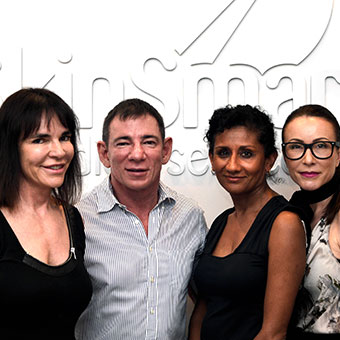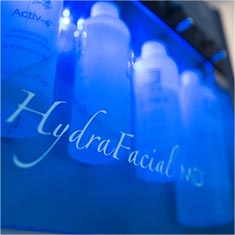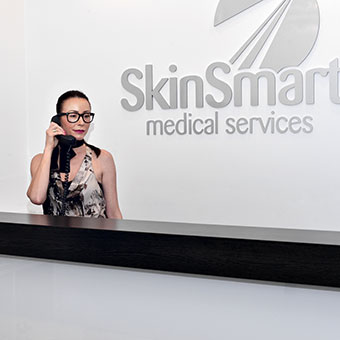Laser Cool Peel Resurfacing
Introduction
Cool Peel Fractional Laser Resurfacing is the latest technology for minimal downtime skin rejuvenation. It can be used to improve skin texture and tone and youthfulness via a process of dermal remodelling through superficial wounding. This treatment is suitable for most skin types.
Watch this short video on the cool peel at SkinSmart Clinic
Description
The Smartxide Cool Peel fractional CO2 laser system delivers a scatter pattern of dots of laser energy to the skin. A fraction of the skin surface is ablated during each treatment so healing occurs quickly from the islands of untreated skin and takes place over a couple of days. The thousands of tiny superficial thermal injuries produced by the laser, stimulate collagen synthesis as part of the healing process.
Benefits and Application
Cool Peel Fractional Laser Skin Resurfacing is a low down time treatment used to treat the general aging of the skin that occurs from the passage of time and the effects of the Australian sun. The improvement includes a reduction in uneven surface pigmentation, less dull tone and loss of elasticity, fewer fine lines, particularly around the eyes, upper lip and mouth.
When you ablate the epidermis and superficial papillary dermis with controlled thermal wounding a repair response stimulates new collagen and elastin to form. The skin is tightened by the effect of the laser energy on the collagen fibres causing both an immediate contraction and then increased stimulation of collagen production over the following several months.
Optimal results occur with three treatments spaced four to six weeks apart and the results are assessed about six months after the final treatment.
Preparation
The skin is thoroughly cleansed of all makeup and sunscreen. The treatment is tolerable and so we generally do not use anaesthetic cream.
If the patient has any history of cold sores antiviral medication should be started prior to the treatment.
The Procedure
The Cool Peel laser procedure takes approximately 30 minutes. A cold air blower helps with any discomfort. A thick post laser lotion is applied to the treated area post procedure and ice can be used to cool the skin and reduce potential swelling.
Aftercare
On the day of treatment the area should be gently cleansed and thick post laser lotion applied. Ice can be used intermittently during the first day to ease any discomfort. The skin will appear red and look treated. It may be a good idea to plan to stay home for the remainder of that day.
The following day there may be some swelling, particularly in the morning. The skin will be less red and appear like rough sandpaper. By day two the swelling should have settled and the skin may start to peel like skin dandruff. A gentle moisturiser can be used to keep the skin moist. The peeling should be allowed to occur naturally with no picking or exfoliation. Men should refrain from shaving for a couple of days. It can take several days for the peeling to be complete.
Down time
Depending on the health of the treated skin, and the laser settings, the downtime should be between 1 and 3 days and should not be severe. Continuing improvement in the skin can be expected for a few months after the final treatment.
Risks
Transient Post Inflammatory Hyper Pigmentation (PIHP) of the skin can occur after laser resurfacing of more olive skinned people however, as there is minimal thermal damage this is far less likely with the Cool Peel treatment.
Cold sores can be triggered by laser resurfacing and if the patient has any history of these, even many years in the past, prophylactic antiviral medication is given prior to the procedure.
Pimples, milia and acne like outbreaks may occur after a Cool Peel treatment but they are very uncommon, usually mild and easily treated with either topical or oral antibiotics.
Discomfort/Pain
With much less heat than most laser resurfacing treatments any pain is substantially reduced. Cooling during the treatment with cold air and after the procedure with ice is effective at controlling any burning or hot sensation in the skin. Minimal ongoing discomfort is usually very manageable. When peeling starts some people experience areas if itchy skin – this can be managed with anthihistamine.
Cost
The cost for this varies depending on the extent of the treatment required. Treatments start at $490.




